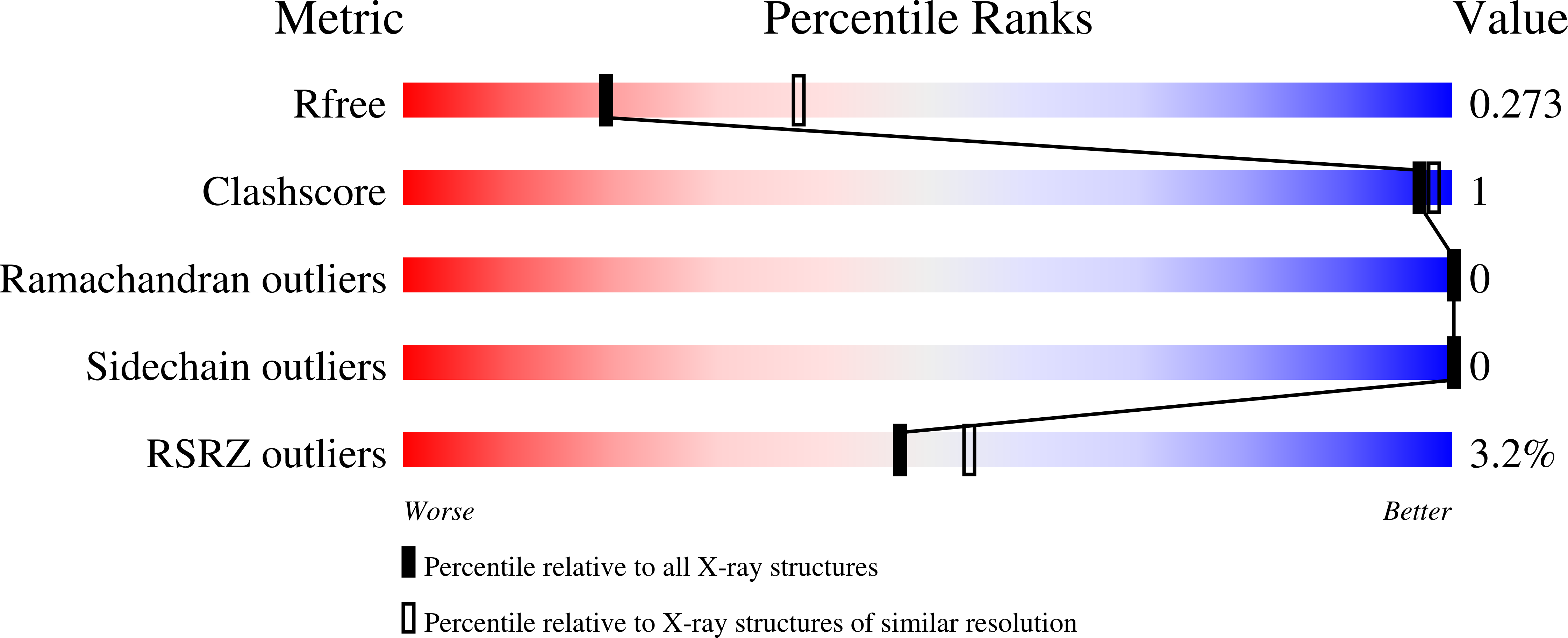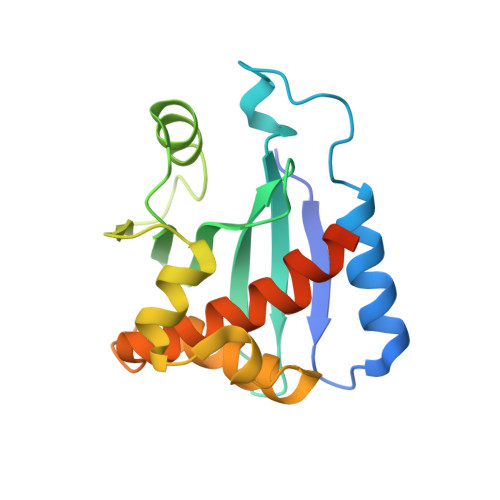Stability of isolated antibody-antigen complexes as a predictive tool for selecting toxin neutralizing antibodies.
Legler, P.M., Compton, J.R., Hale, M.L., Anderson, G.P., Olson, M.A., Millard, C.B., Goldman, E.R.(2017) MAbs 9: 43-57
- PubMed: 27660893
- DOI: https://doi.org/10.1080/19420862.2016.1236882
- Primary Citation of Related Structures:
5SV3, 5SV4 - PubMed Abstract:
Ricin is an A-B ribosome inactivating protein (RIP) toxin composed of an A-chain subunit (RTA) that contains a catalytic N-glycosidase and a B-chain (RTB) lectin domain that binds cell surface glycans. Ricin exploits retrograde transport to enter into the Golgi and the endoplasmic reticulum, and then dislocates into the cytoplasm where it can reach its substrate, the rRNA. A subset of isolated antibodies (Abs) raised against the RTA subunit protect against ricin intoxication, and RTA-based vaccine immunogens have been shown to provide long-lasting protective immunity against the holotoxin. Anti-RTA Abs are unlikely to cross a membrane and reach the cytoplasm to inhibit the enzymatic activity of the A-chain. Moreover, there is not a strict correlation between the apparent binding affinity (K a ) of anti-RTA Abs and their ability to successfully neutralize ricin toxicity. Some anti-RTA antibodies are toxin-neutralizing, whereas others are not. We hypothesize that neutralizing anti-RTA Abs may interfere selectively with conformational change(s) or partial unfolding required for toxin internalization. To test this hypothesis, we measured the melting temperatures (T m ) of neutralizing single-domain Ab (sdAb)-antigen (Ag) complexes relative to the T m of the free antigen (T m -shift = T m complex - T m Ag ), and observed increases in the T m complex of 9-20 degrees. In contrast, non-neutralizing sdAb-Ag complexes shifted the T m Complex by only 6-7 degrees. A strong linear correlation (r 2 = 0.992) was observed between the magnitude of the T m -shift and the viability of living cells treated with the sdAb and ricin holotoxin. The T m -shift of the sdAb-Ag complex provided a quantitative biophysical parameter that could be used to predict and rank-order the toxin-neutralizing activities of Abs. We determined the first structure of an sdAb-RTA1-33/44-198 complex, and examined other sdAb-RTA complexes. We found that neutralizing sdAb bound to regions involved in the early stages of unfolding. These Abs likely interfere with steps preceding or following endocytosis that require conformational changes. This method may have utility for the characterization or rapid screening of other Ab that act to prevent conformational changes or unfolding as part of their mechanism of action.
Organizational Affiliation:
a US Naval Research Laboratory , Washington , DC , USA.
















